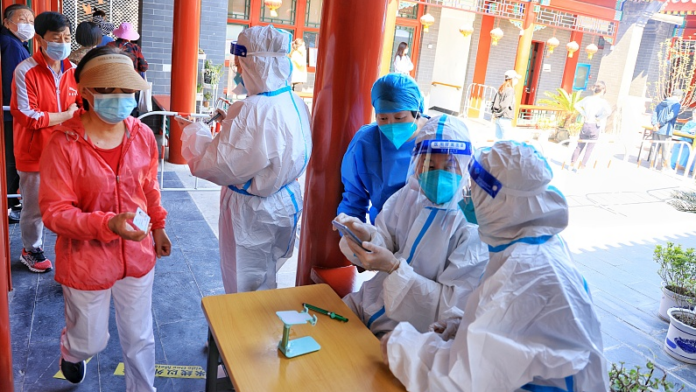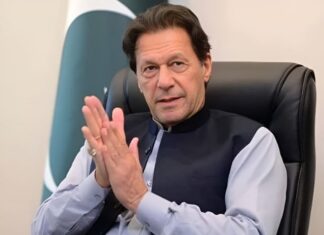At the height of the COVID-19 pandemic, the U.S. military launched a secret campaign to counter what it perceived as China’s growing influence in the Philippines, a nation hit especially hard by the deadly virus.
The clandestine operation has not been previously reported. It aimed to sow doubt about the safety and efficacy of vaccines and other life-saving aid that was being supplied by China, a Reuters investigation found. Through phony internet accounts meant to impersonate Filipinos, the military’s propaganda efforts morphed into an anti-vax campaign. Social media posts decried the quality of face masks, test kits and the first vaccine that would become available in the Philippines – China’s Sinovac inoculation.
Reuters identified at least 300 accounts on X, formerly Twitter, that matched descriptions shared by former U.S. military officials familiar with the Philippines operation. Almost all were created in the summer of 2020 and centered on the slogan #Chinaangvirus – Tagalog for China is the virus.

TRANSLATION FROM TAGALOG
#ChinaIsTheVirus
Do you want that? COVID came from China and vaccines came from China
(Beneath the message is a picture of then-Philippines President Rodrigo Duterte saying: “China! Prioritize us first please. I’ll give you more islands, POGO and black sand.” POGO refers to Philippine Offshore Gaming Operators, online gambling companies that boomed during Duterte’s administration. Black sand refers to a type of mining.)
“COVID came from China and the VACCINE also came from China, don’t trust China!” one typical tweet from July 2020 read in Tagalog. The words were next to a photo of a syringe beside a Chinese flag and a soaring chart of infections. Another post read: “From China – PPE, Face Mask, Vaccine: FAKE. But the Coronavirus is real.”
After Reuters asked X about the accounts, the social media company removed the profiles, determining they were part of a coordinated bot campaign based on activity patterns and internal data.
The U.S. military’s anti-vax effort began in the spring of 2020 and expanded beyond Southeast Asia before it was terminated in mid-2021, Reuters determined. Tailoring the propaganda campaign to local audiences across Central Asia and the Middle East, the Pentagon used a combination of fake social media accounts on multiple platforms to spread fear of China’s vaccines among Muslims at a time when the virus was killing tens of thousands of people each day. A key part of the strategy: amplify the disputed contention that, because vaccines sometimes contain pork gelatin, China’s shots could be considered forbidden under Islamic law.
The military program started under former President Donald Trump and continued months into Joe Biden’s presidency, Reuters found – even after alarmed social media executives warned the new administration that the Pentagon had been trafficking in COVID misinformation. The Biden White House issued an edict in spring 2021 banning the anti-vax effort, which also disparaged vaccines produced by other rivals, and the Pentagon initiated an internal review, Reuters found.
“I don’t think it’s defensible. I’m extremely dismayed, disappointed and disillusioned to hear that the U.S. government would do that.”
The U.S. military is prohibited from targeting Americans with propaganda, and Reuters found no evidence the Pentagon’s influence operation did so.
Spokespeople for Trump and Biden did not respond to requests for comment about the clandestine program.
A senior Defense Department official acknowledged the U.S. military engaged in secret propaganda to disparage China’s vaccine in the developing world, but the official declined to provide details.
A Pentagon spokeswoman said the U.S. military “uses a variety of platforms, including social media, to counter those malign influence attacks aimed at the U.S., allies, and partners.” She also noted that China had started a “disinformation campaign to falsely blame the United States for the spread of COVID-19.”
In an email, the Chinese Ministry of Foreign Affairs said that it has long maintained the U.S. government manipulates social media and spreads misinformation.
Manila’s embassy in Washington did not respond to Reuters inquiries, including whether it had been aware of the Pentagon operation. A spokesperson for the Philippines Department of Health, however, said the “findings by Reuters deserve to be investigated and heard by the appropriate authorities of the involved countries.” Some aid workers in the Philippines, when told of the U.S. military propaganda effort by Reuters, expressed outrage.
Briefed on the Pentagon’s secret anti-vax campaign by Reuters, some American public health experts also condemned the program, saying it put civilians in jeopardy for potential geopolitical gain. An operation meant to win hearts and minds endangered lives, they said.
“I don’t think it’s defensible,” said Daniel Lucey, an infectious disease specialist at Dartmouth’s Geisel School of Medicine. “I’m extremely dismayed, disappointed and disillusioned to hear that the U.S. government would do that,” said Lucey, a former military physician who assisted in the response to the 2001 anthrax attacks.
The effort to stoke fear about Chinese inoculations risked undermining overall public trust in government health initiatives, including U.S.-made vaccines that became available later, Lucey and others said. Although the Chinese vaccines were found to be less effective than the American-led shots by Pfizer and Moderna, all were approved by the World Health Organization. Sinovac did not respond to a Reuters request for comment.

Academic research published recently has shown that, when individuals develop skepticism toward a single vaccine, those doubts often lead to uncertainty about other inoculations. Lucey and other health experts say they saw such a scenario play out in Pakistan, where the Central Intelligence Agency used a fake hepatitis vaccination program in Abbottabad as cover to hunt for Osama bin Laden, the terrorist mastermind behind the attacks of September 11, 2001. Discovery of the ruse led to a backlash against an unrelated polio vaccination campaign, including attacks on healthcare workers, contributing to the reemergence of the deadly disease in the country.
“It should have been in our interest to get as much vaccine in people’s arms as possible,” said Greg Treverton, former chairman of the U.S. National Intelligence Council, which coordinates the analysis and strategy of Washington’s many spy agencies. What the Pentagon did, Treverton said, “crosses a line.”
‘We were desperate’
Together, the phony accounts used by the military had tens of thousands of followers during the program. Reuters could not determine how widely the anti-vax material and other Pentagon-planted disinformation was viewed, or to what extent the posts may have caused COVID deaths by dissuading people from getting vaccinated.
In the wake of the U.S. propaganda efforts, however, then-Philippines President Rodrigo Duterte had grown so dismayed by how few Filipinos were willing to be inoculated that he threatened to arrest people who refused vaccinations.
“You choose, vaccine or I will have you jailed,” a masked Duterte said in a televised address in June 2021. “There is a crisis in this country … I’m just exasperated by Filipinos not heeding the government.”
Then-Philippines President Rodrigo Duterte pleaded with citizens to get the COVID vaccine. “You choose, vaccine or I will have you jailed,” a masked Duterte said in this televised address in June 2021.
When he addressed the vaccination issue, the Philippines had among the worst inoculation rates in Southeast Asia. Only 2.1 million of its 114 million citizens were fully vaccinated – far short of the government’s target of 70 million. By the time Duterte spoke, COVID cases exceeded 1.3 million, and almost 24,000 Filipinos had died from the virus. The difficulty in vaccinating the population contributed to the worst death rate in the region.
A spokesperson for Duterte did not make the former president available for an interview.
Some Filipino healthcare professionals and former officials contacted by Reuters were shocked by the U.S. anti-vax effort, which they say exploited an already vulnerable citizenry. Public concerns about a Dengue fever vaccine, rolled out in the Philippines in 2016, had led to broad skepticism toward inoculations overall, said Lulu Bravo, executive director of the Philippine Foundation for Vaccination. The Pentagon campaign preyed on those fears.
“Why did you do it when people were dying? We were desperate,” said Dr. Nina Castillo-Carandang, a former adviser to the World Health Organization and Philippines government during the pandemic. “We don’t have our own vaccine capacity,” she noted, and the U.S. propaganda effort “contributed even more salt into the wound.”
The campaign also reinforced what one former health secretary called a longstanding suspicion of China, most recently because of aggressive behavior by Beijing in disputed areas of the South China Sea. Filipinos were unwilling to trust China’s Sinovac, which first became available in the country in March 2021, said Esperanza Cabral, who served as health secretary under President Gloria Macapagal Arroyo. Cabral said she had been unaware of the U.S. military’s secret operation.
“I’m sure that there are lots of people who died from COVID who did not need to die from COVID,” she said.
To implement the anti-vax campaign, the Defense Department overrode strong objections from top U.S. diplomats in Southeast Asia at the time, Reuters found. Sources involved in its planning and execution say the Pentagon, which ran the program through the military’s psychological operations center in Tampa, Florida, disregarded the collateral impact that such propaganda may have on innocent Filipinos.
“We weren’t looking at this from a public health perspective,” said a senior military officer involved in the program. “We were looking at how we could drag China through the mud.”

A new disinformation war
In uncovering the secret U.S. military operation, Reuters interviewed more than two dozen current and former U.S officials, military contractors, social media analysts and academic researchers. Reporters also reviewed Facebook, X and Instagram posts, technical data and documents about a set of fake social media accounts used by the U.S. military. Some were active for more than five years.
Clandestine psychological operations are among the government’s most highly sensitive programs. Knowledge of their existence is limited to a small group of people within U.S. intelligence and military agencies. Such programs are treated with special caution because their exposure could damage foreign alliances or escalate conflict with rivals.
Over the last decade, some U.S. national security officials have pushed for a return to the kind of aggressive clandestine propaganda operations against rivals that the United States’ wielded during the Cold War. Following the 2016 U.S. presidential election, in which Russia used a combination of hacks and leaks to influence voters, the calls to fight back grew louder inside Washington.
In 2019, Trump authorized the Central Intelligence Agency to launch a clandestine campaign on Chinese social media aimed at turning public opinion in China against its government, Reuters reported in March. As part of that effort, a small group of operatives used bogus online identities to spread disparaging narratives about Xi Jinping’s government.
COVID-19 galvanized the drive to wage psychological operations against China. One former senior Pentagon leader described the pandemic as a “bolt of energy” that finally ignited the long delayed counteroffensive against China’s influence war.
The Pentagon’s anti-vax propaganda came in response to China’s own efforts to spread false information about the origins of COVID. The virus first emerged in China in late 2019. But in March 2020, Chinese government officials claimed without evidence that the virus may have been first brought to China by an American service member who participated in an international military sports competition in Wuhan the previous year. Chinese officials also suggested that the virus may have originated in a U.S. Army research facility at Fort Detrick, Maryland. There’s no evidence for that assertion.
Mirroring Beijing’s public statements, Chinese intelligence operatives set up networks of fake social media accounts to promote the Fort Detrick conspiracy, according to a U.S. Justice Department complaint.
China’s messaging got Washington’s attention. Trump subsequently coined the term “China virus” as a response to Beijing’s accusation that the U.S. military exported COVID to Wuhan.
“That was false. And rather than having an argument, I said, ‘I have to call it where it came from,’” Trump said in a March 2020 news conference. “It did come from China.”

China’s Foreign Ministry said in an email that it opposed “actions to politicize the origins question and stigmatize China.” The ministry had no comment about the Justice Department’s complaint.
Beijing didn’t limit its global influence efforts to propaganda. It announced an ambitious COVID assistance program, which included sending masks, ventilators and its own vaccines – still being tested at the time – to struggling countries. In May 2020, Xi announced that the vaccine China was developing would be made available as a “global public good,” and would ensure “vaccine accessibility and affordability in developing countries.” Sinovac was the primary vaccine available in the Philippines for about a year until U.S.-made vaccines became more widely available there in early 2022.
Washington’s plan, called Operation Warp Speed, was different. It favored inoculating Americans first, and it placed no restrictions on what pharmaceutical companies could charge developing countries for the remaining vaccines not used by the United States. The deal allowed the companies to “play hardball” with developing countries, forcing them to accept high prices, said Lawrence Gostin, a professor of medicine at Georgetown University who has worked with the World Health Organization.
The deal “sucked most of the supply out of the global market,” Gostin said. “The United States took a very determined America First approach.”
To Washington’s alarm, China’s offers of assistance were tilting the geopolitical playing field across the developing world, including in the Philippines, where the government faced upwards of 100,000 infections in the early months of the pandemic.























